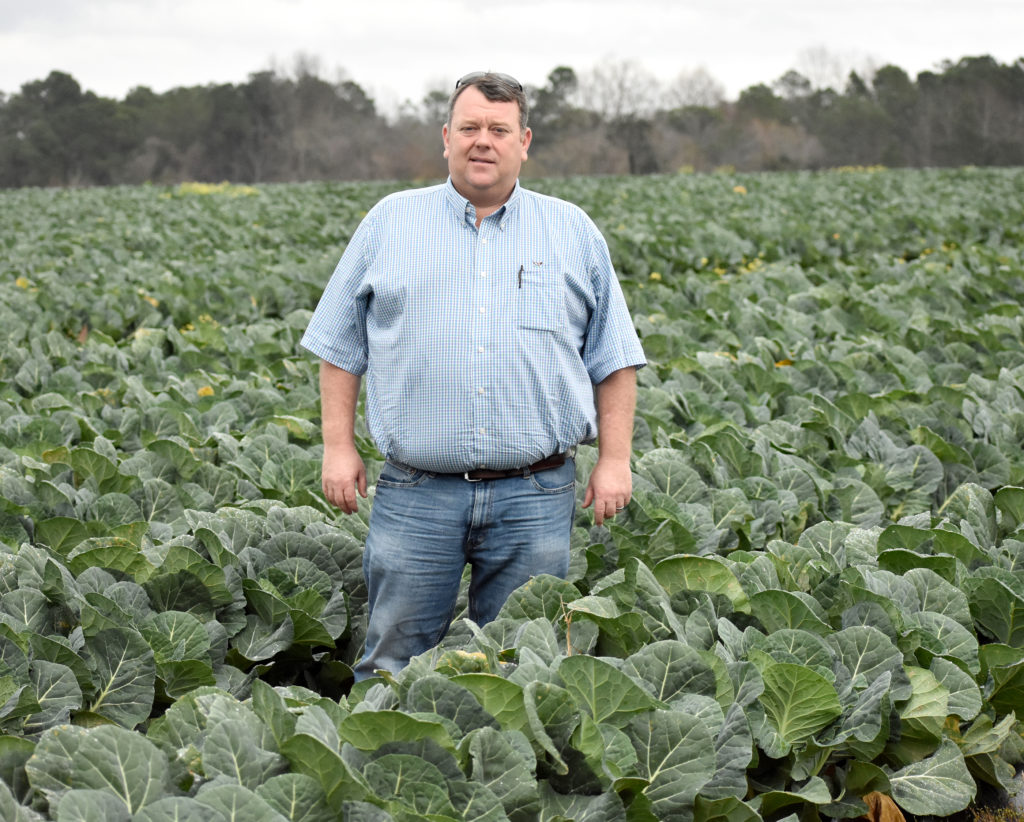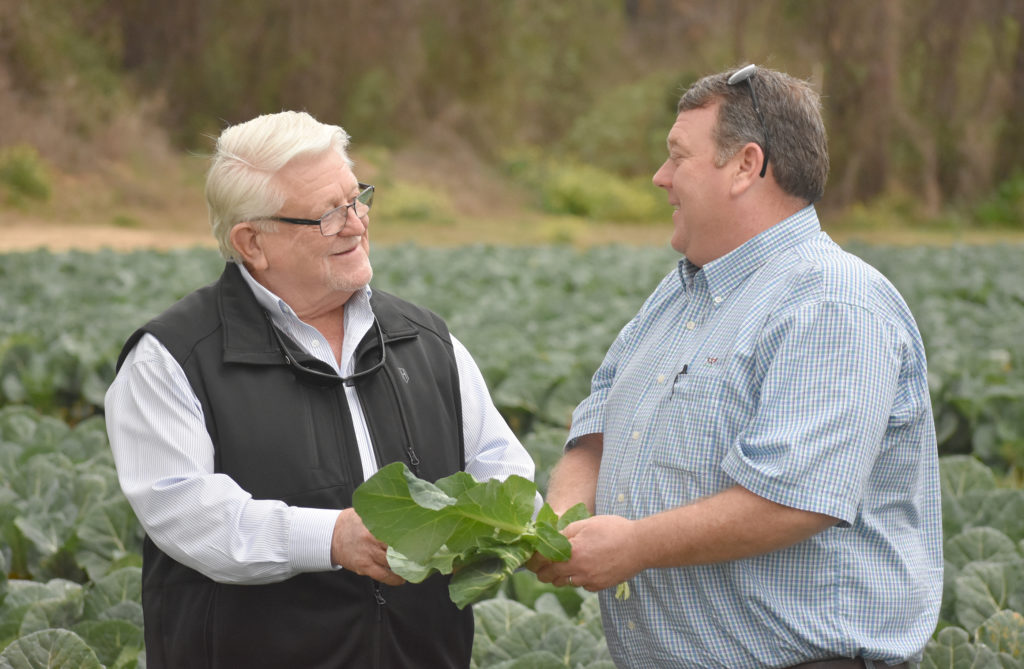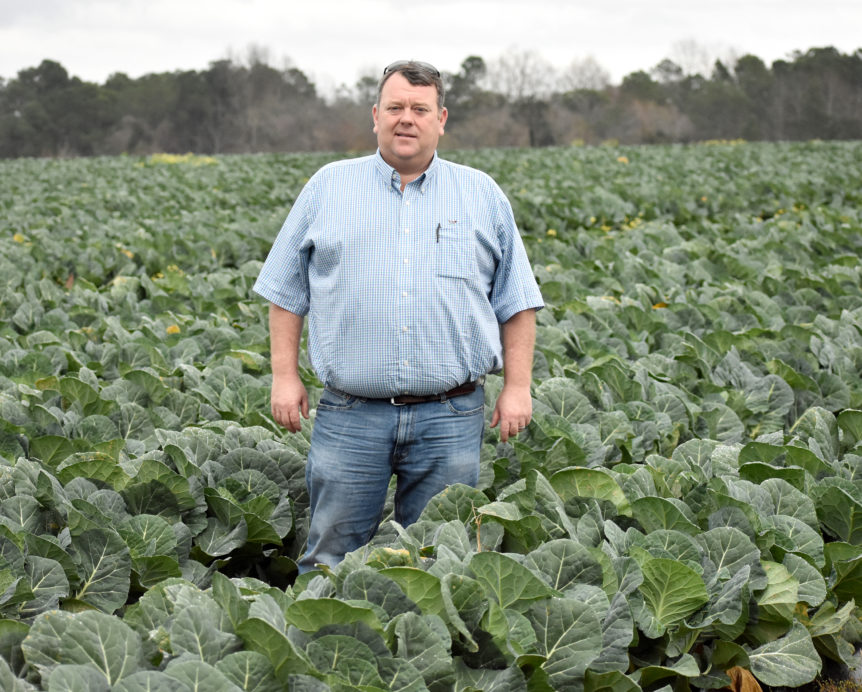
By Clint Thompson
It was a typical mid-summer scene in South Georgia: scorching temperatures, dusty fields and farm work in progress. For youngster Jaime Patrick, it was just another day at Patrick Farms in Omega, Georgia.

“Working here on the farm in the summers, we were growing sweet potatoes at the time. We always had people walk behind the transplanter; we called them peggers. If the transplanter missed a plant, you had a plant in your hand and you would peg that sweet potato into the missed spot,” says Patrick, recollecting his earliest memories on the farm. “That was my job (as a kid). I remember it would be hot. It would be 100 degrees out there. My dad would pull up and do stuff, and I would beg him, ‘Please take me with you.’”
Patrick’s fondness for the farm started at an early age, watching his father, Gibbs, produce vegetables. It was the reason he returned to the place he called home. He didn’t want to do anything else.
“I think for all of the bad memories that I have, there was always a good memory to go with it, too,” Patrick says.
Patrick Farms produces some type of specialty crop at least 10 months out of the year. It grows greens, like turnips, mustard, collards and kale, and spring vegetables like sweet corn, peppers, squash, eggplant, zucchini, mini watermelons and hot peppers. Production spans 5,000 acres in South Georgia in Tift, Cook, Colquitt and Worth counties.
Farm Expansion
“We’ve gone from 100 employees to 400 employees, so we’ve grown. We’ve gone from driving tractors to GPS (global positioning system). We don’t own a drone, but we have some drones coming in and spraying crops now,” Patrick says. “Technology has gotten so much better. That’s probably helped us more than anything.
“There are still some things that are so far-fetched, we ask, ‘How is that going to work?’ One example is trying to harvest peppers with certain machines. I’m still a little skeptical about some things like that. But we need things like that to help us, because labor is costing us so much money now. We’re needing to find other options to get product harvested or packed.”
Citrus Addition
One of the most recent significant developments for specialty crop producers in Georgia is the growth of citrus production in the state over the past decade. It provides growers like Patrick with another crop to diversify their portfolios. Patrick Farms produces 250 citrus acres, with approximately 60% being grapefruit. It also grows navel oranges and tangerines.
Patrick had to overcome the challenge of convincing potential buyers that Georgia citrus was more than a pipe dream.
“In talking to customers about Georgia citrus, they’re like, ‘Georgia citrus? What are y’all talking about?’” Patrick says. “When we first started transplanting some, I’d talk to some guys in Atlanta and say, ‘We’ve got some citrus coming on.’ They’d say, ‘What timeframe are you going to have it?’ I’d say this is the timeframe and they’d say that’s the same time as Florida. ‘You’re not going to be able to do it,’ they’d say. I’d say, ‘But we can save on freight, especially to Atlanta, and it’s locally grown.’”
According to Patrick, customers are starting to see that Georgia citrus is viable and that the quality is very good.
UGA Varieties
Patrick Farms grows University of Georgia citrus varieties, developed by world-renowned breeder Wayne Hanna. Despite its success, Patrick Farms is not immune to the obstacles that have historically challenged the citrus industry. Most notable is the multi-day freeze event in December 2022. Patrick only harvested six bins of grapefruit and about 2,000 boxes of tangerines as a result.
Still, the citrus addition to Patrick Farms has reinvigorated Patrick, who could not have imagined he and his father would have the opportunity to produce a citrus crop. He says it proves that you are never too old to learn something new.
“It’s always exciting to learn how to grow something new,” Patrick says. “We have a consultant in Florida that’s helping us. He’ll say we need to do this, this and this to the trees. We’ll say, ‘Okay, we’ll get it done this afternoon.’ He’ll say, ‘No, this is a tree crop. It isn’t produce. You’ve got a couple of three weeks to do this.’ On produce, if you have to spray, you need to spray it right then. On tree fruit, you don’t have to worry about it as quickly.”
Patrick believes the citrus industry is going to be a good industry for Georgia.
Ag Advocate
He serves on the board of directors for the Georgia Fruit & Vegetable Growers Association, an organization well known for its support and advocacy for Georgia specialty crop producers. Patrick doesn’t miss an opportunity to tell the farmer’s story and remind legislators, consumers, and anybody who will listen about the importance of supporting locally grown produce.
But the lack of support can at times be discouraging for this fourth-generation farmer.
“I try to be optimistic about most everything, but everything is so tough right now. There are some farmers here in this area that are retiring and starting to rent their land out,” Patrick says. “The most discouraging thing, too, is the average age of a farmer is in the mid-to-late 50s. I’m a youngster compared to that. I don’t know what we’re going to do to try to get kids to love farming again.
“We have a lot of farmers that don’t have kids coming back to the farm. Here in Omega, I know of three families that when they’re done, they don’t have anyone to take over the business. The next generation sees the stresses that their parents are going through seven days a week and think, ‘Why do we want to do that?’”
Challenges
Challenges include the high costs associated with the H-2A program’s adverse effect wage rate as well as rising imports from Mexico. And there seems to be minimal legislative help to aid farmers.
“We don’t feel like we can get anything done with labor or trade,” says Patrick. “Anything we try to approach anybody with is automatically shot down. It’s very frustrating, and I don’t know what people think is going to happen if the American farmer can’t grow produce, cotton or peanuts anymore. I guess they assume they’ll just bring it in from other countries. That’s not very sustainable for our country, not to be able to supply our own needs.”
Patrick has two brothers and often fields questions on whether he made the right choice to return to the farm instead of choosing a path elsewhere. But then he remembers the life of a farmer and the impact his father made all those years ago. There is little doubt this was where he was supposed to be.
“To be able to work with my dad and work with the same people here on the farm that were here when I was a kid … to see that and see how much we are benefiting other families and how we’re able to feed people, it’s just something that fulfills me. There’s nothing better,” Patrick concludes.










